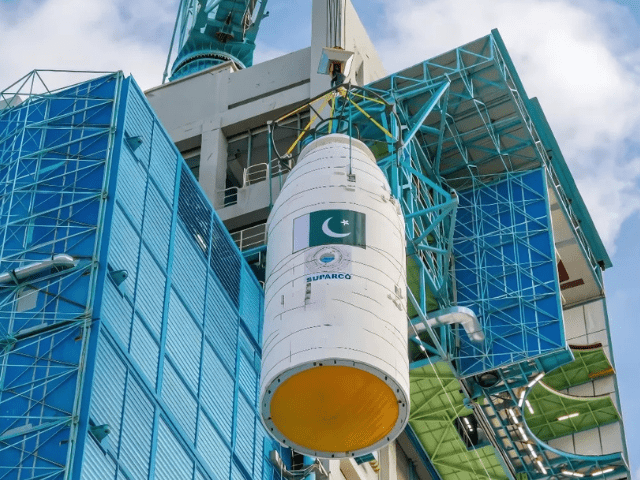The first fully indigenous electro-optical satellite (EO-1) of the Pakistan Space and Upper Atmosphere Research Commission (SUPARCO) was successfully launched into space from China on Friday.
The satellite was launched from China’s Jiuquan Satellite Launch Center, and the event was broadcast live from the SUPARCO complex in Karachi, allowing Pakistanis to follow the satellite’s journey into space.
The EO-1 satellite will play a key role in monitoring environmental changes, tracking natural disasters and providing vital data on crop health, soil moisture and weather conditions, helping to boost agricultural productivity .
The official launching ceremony of the Pakistan Space and Upper Atmosphere Research Commission (SUPARCO) complex in Karachi took place earlier today.
According to Zain Bukhari, expert at SUPARCO, the EO-1 satellite is a historic achievement for Pakistan. “EO-1 is equipped with a high-resolution camera that will capture detailed images of the Earth, providing multiple applications.
This is the first satellite completely indigenously designed and manufactured by SUPARCO engineers, demonstrating the country’s ability to achieve self-sufficiency in space technology,” Bukhari told The Associated Press from Pakistan earlier this week.
Bukhari further noted that the satellite had undergone rigorous testing to ensure its operational availability.
He noted that the launch represents a proud moment for the entire nation.
The EO-1 satellite is expected to provide crucial data in several sectors. It could play a key role in disaster management, including real-time data monitoring during floods and earthquakes, allowing authorities to assess damage more effectively.
Additionally, the satellite’s capabilities will support precision agriculture, helping to monitor crops, assess irrigation needs, predict yields and contribute to food security initiatives.
Urban development and planning will also benefit from EO-1, with its ability to track infrastructure growth, manage urban sprawl, and contribute to urban and regional planning. Environmental monitoring is another key area where the satellite will provide valuable information, offering updates on floods, landslides, deforestation and land erosion.
Additionally, the satellite will contribute to the extraction and conservation of natural resources, including monitoring minerals, oil and gas fields, glaciers and water resources.
This launch highlights Pakistan’s growing space capabilities and its efforts to expand its role in space technology, marking an important step towards greater self-reliance in this area.




